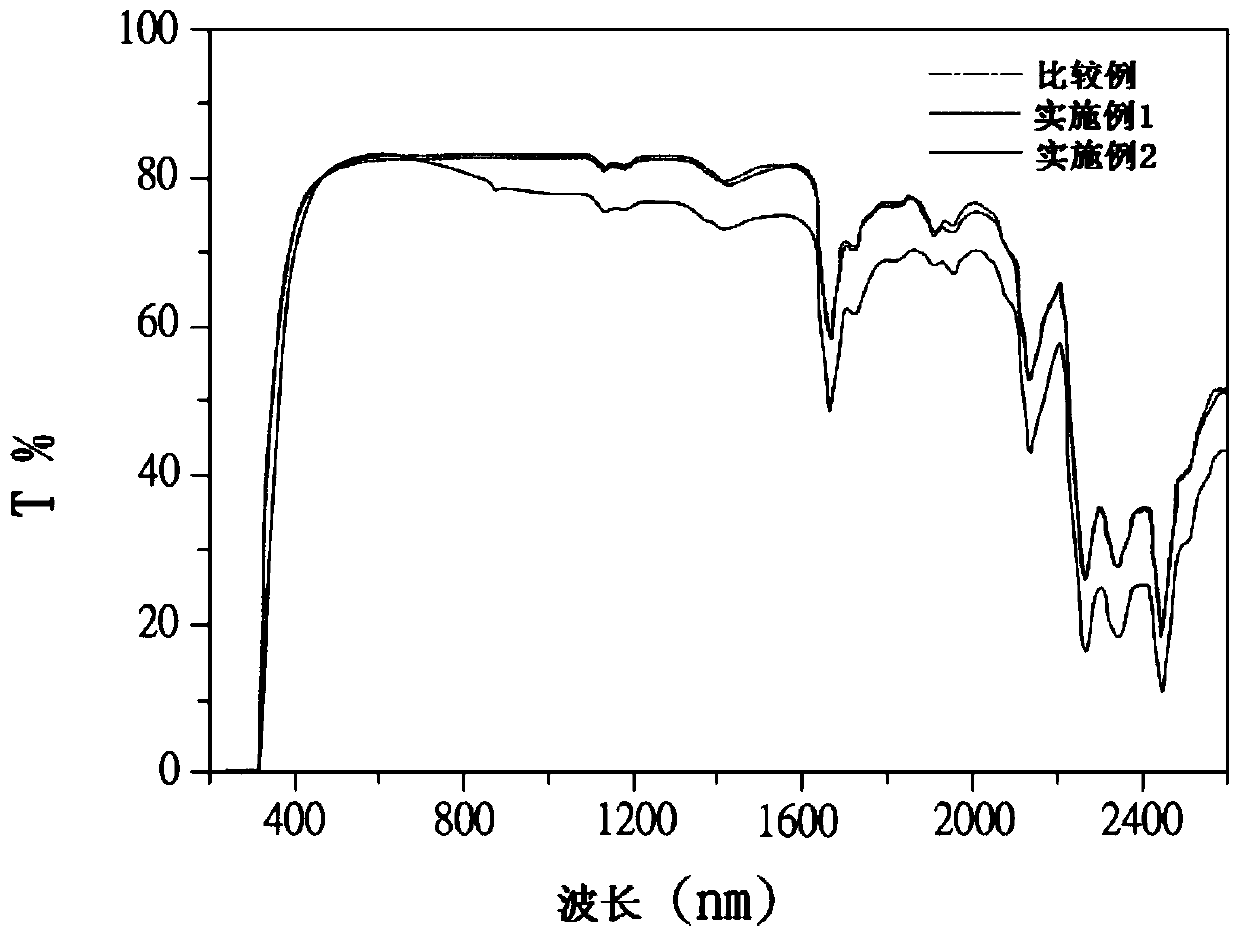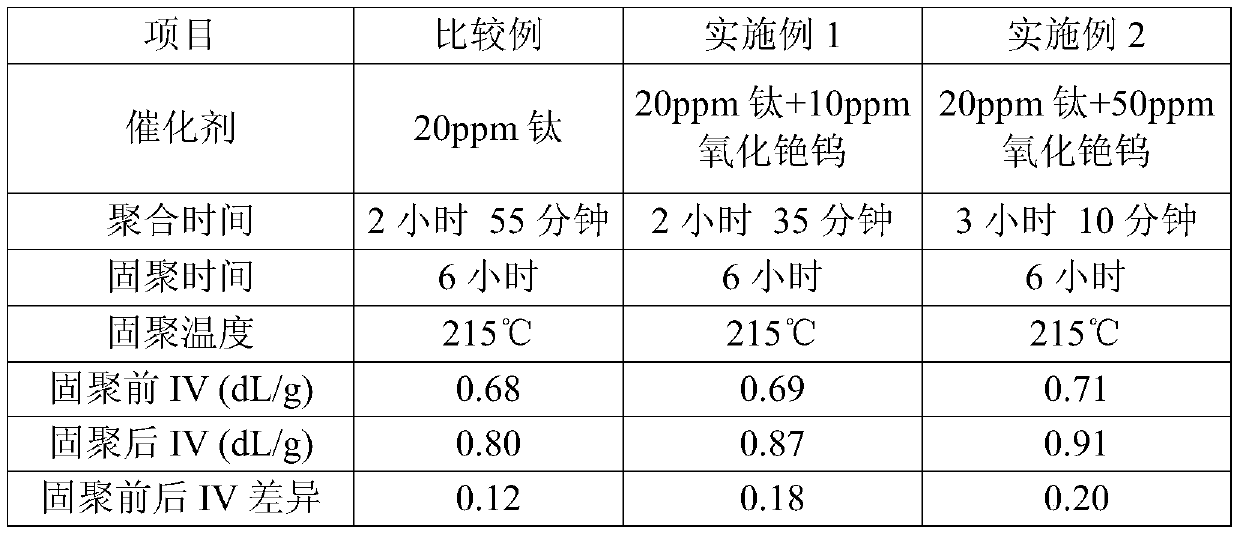Catalyst system composition for making pet resin
A catalyst and composition technology, applied in the field of catalyst system composition, can solve problems such as long process time, yellowish color of PET resin, slow solid-state polymerization rate, etc., and achieve the effects of shortening process time, improving yellowish color, and increasing rate
- Summary
- Abstract
- Description
- Claims
- Application Information
AI Technical Summary
Problems solved by technology
Method used
Image
Examples
Embodiment 1
[0032] The BHET monomer of weighing 400g and 20g ethylene glycol (ethylene glycol) are placed in reactor, then add the cesium tungsten oxide nano-dispersion liquid ( cesium tungsten oxide content is 10ppm of theoretical PET weight) catalyst system composition, add 0.03g phosphoric acid in addition (phosphorus content is 24.5ppm of theoretical PET weight); Decrease to 60mmHg for about 30 minutes; then raise the temperature to 280°C, further reduce the vacuum to 1torr (approximately equivalent to 1mmHg), and continue the reaction until the torque value displayed by the agitator reaches a fixed value before feeding. The subsequent solid-state polymerization steps are as follows. Weigh 50-100g of the polymerized PET product and place it in a vacuum high-temperature furnace. The reaction temperature rises from room temperature to 215°C for about 1 hour, and when it reaches 215°C, it is kept at a constant temperature for 6 hours. room temperature. Then measure the intrinsic viscosi...
Embodiment 2
[0034] The BHET monomer of weighing 400g and 20g ethylene glycol (ethylene glycol) are placed in reactor, then add and comprise 0.056g TBT catalyst (titanium content is 20ppm of theoretical PET weight), 0.420g cesium tungsten oxide nanodispersion liquid ( Cesium tungsten oxide content is 50ppm of theoretical PET weight) catalyst system composition, add 0.03g phosphoric acid (phosphorus content is 24.5ppm of theoretical PET weight) in addition; Decrease to 60mmHg for about 30 minutes; then raise the temperature to 280°C, further reduce the vacuum to 1torr (approximately equivalent to 1mmHg), and continue the reaction until the torque value displayed by the agitator reaches a fixed value before feeding. The subsequent solid-state polymerization steps are as follows. Weigh 50-100g of the polymerized PET product and place it in a vacuum high-temperature furnace. The reaction temperature rises from room temperature to 215°C for about 1 hour, and when it reaches 215°C, it is kept at ...
PUM
| Property | Measurement | Unit |
|---|---|---|
| particle diameter | aaaaa | aaaaa |
| particle diameter | aaaaa | aaaaa |
Abstract
Description
Claims
Application Information
 Login to View More
Login to View More - R&D
- Intellectual Property
- Life Sciences
- Materials
- Tech Scout
- Unparalleled Data Quality
- Higher Quality Content
- 60% Fewer Hallucinations
Browse by: Latest US Patents, China's latest patents, Technical Efficacy Thesaurus, Application Domain, Technology Topic, Popular Technical Reports.
© 2025 PatSnap. All rights reserved.Legal|Privacy policy|Modern Slavery Act Transparency Statement|Sitemap|About US| Contact US: help@patsnap.com



